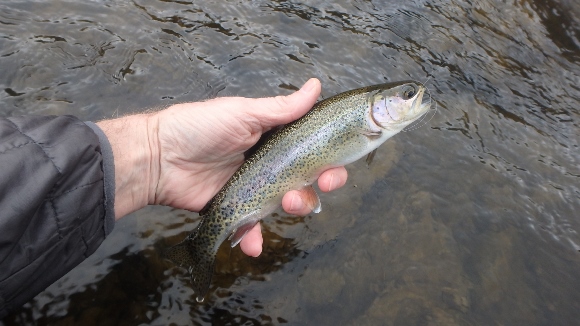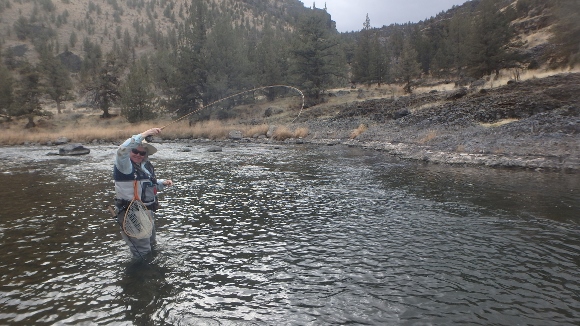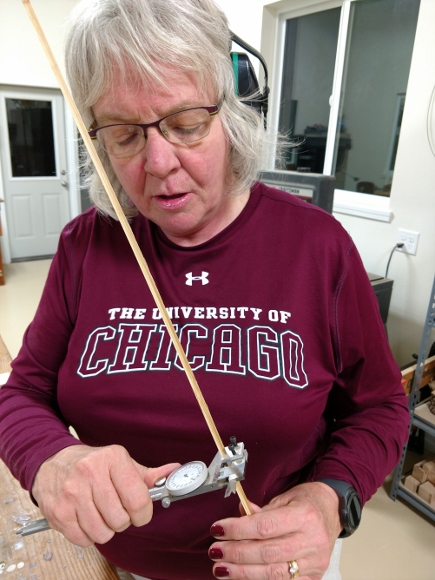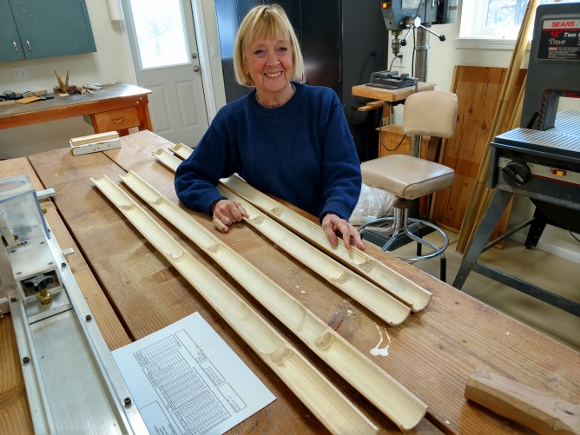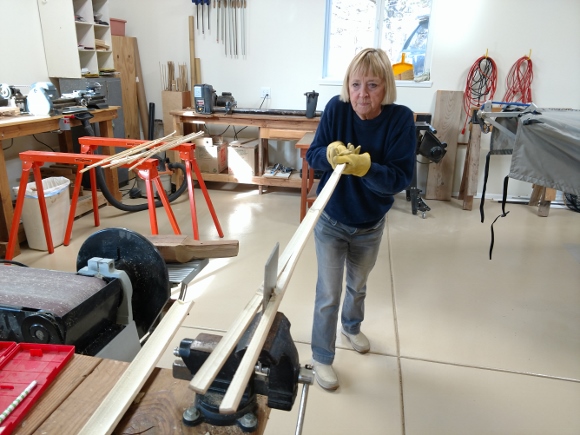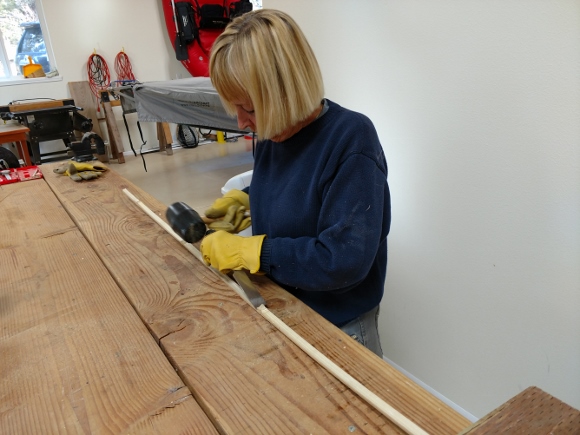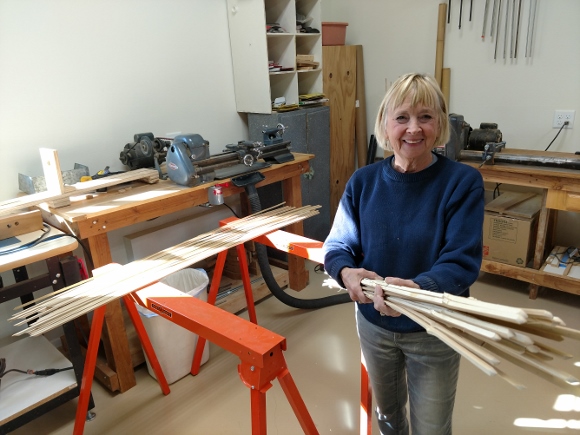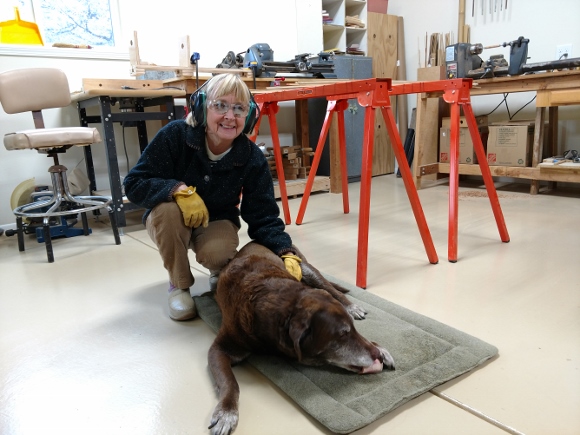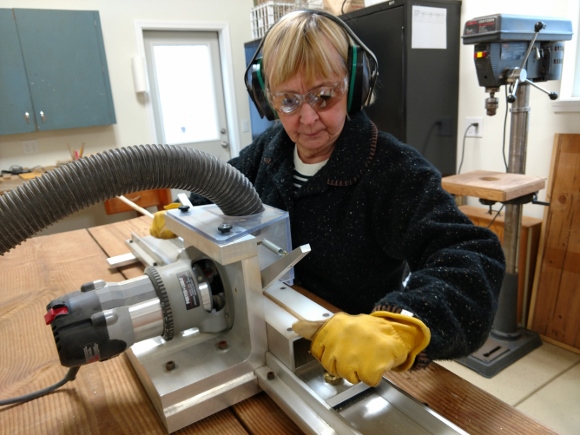I just received a new shipment of bamboo from my supplier in Seattle and thought a good post might be to talk a little about the bamboo we purchase for our bamboo fly rods.
The bamboo we use is a particular species that comes from a small region in China…it’s not your garden variety of bamboo that we use. There is a supplier in Seattle (the Bamboo Broker) who travels to China and hand selects the bamboo we use in our fly rods. The choice bamboo we use has some particular characteristics that I’ll get into later.
A piece of bamboo is referred to as “a culm”. When we order bamboo, it comes in 12 ft. lengths, and each piece is about 2 1/2 inches in diameter. It comes in bundles of 10 culms/bundle, and I usually order 3 or 4 bundles at a time. Including shipping costs, the cost for a single culm of bamboo ends up being about $40 each.
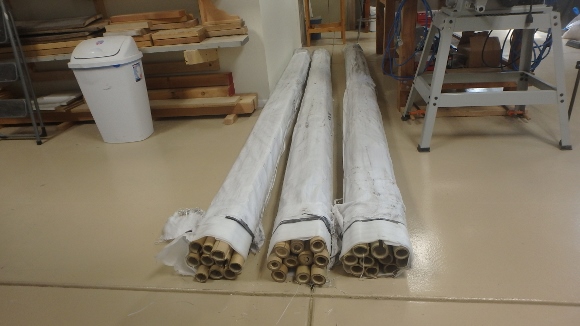
Three bundles of bamboo that I just ordered.
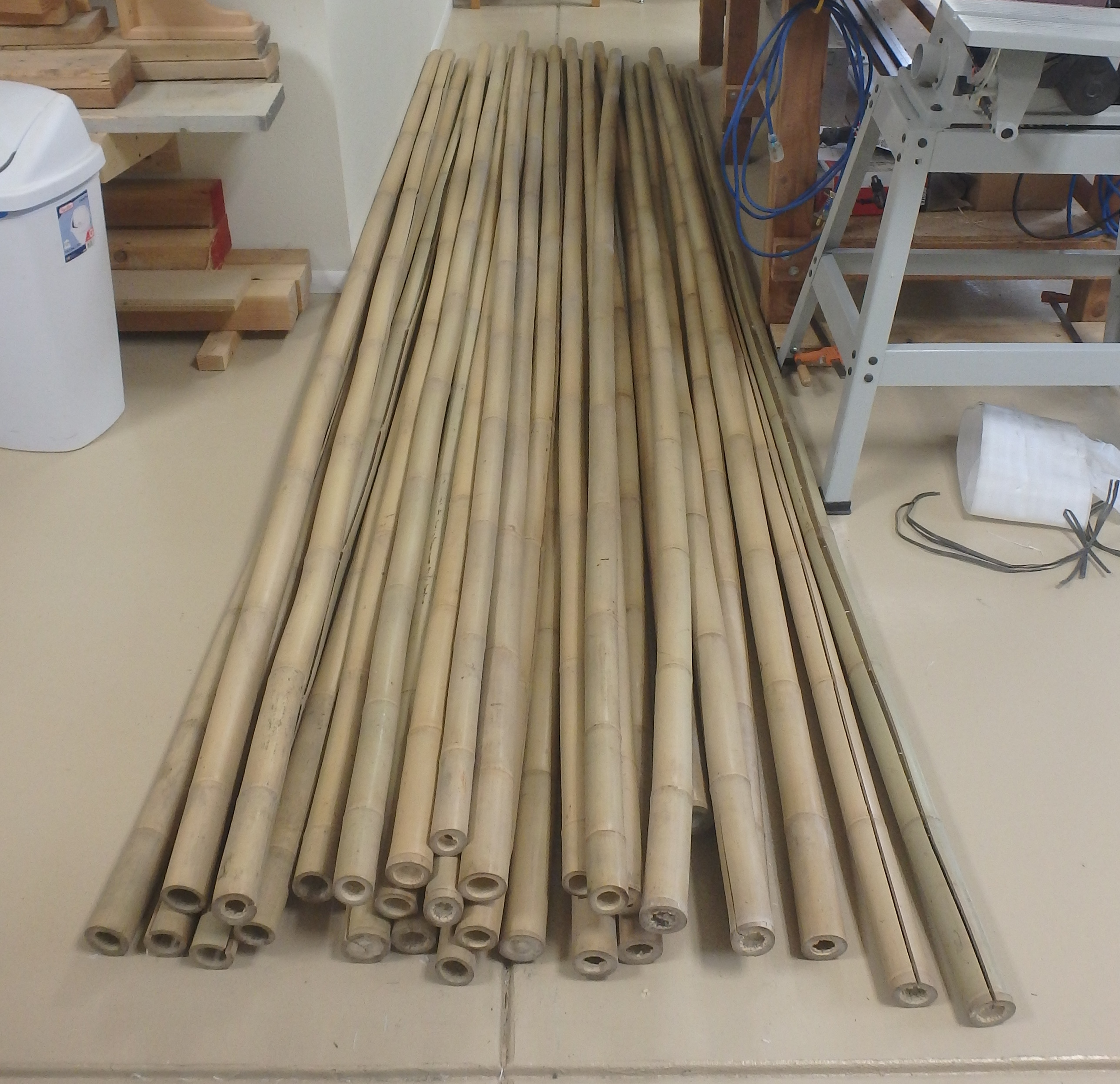
I’ll get quite a few rods from these 3 bundles of bamboo.
After we unpack the bamboo, the first thing we need to do is to put a “stress relief crack down the entire length of the bamboo culm. This is to relieve internal stresses that exist in the bamboo that could lead to excessive cracking later on. Sometimes a crack already exists when we receive the bamboo, and you see that in the two culms in the right of this photo. Because the bamboo fibers run the entire length of the culm, it’s pretty easy to make the stress relief crack. I accomplish this with large screw driver and hammer…banging the screw driver hard with the hammer will open the crack and then twisting the screw driver walks the crack down the length of the culm.
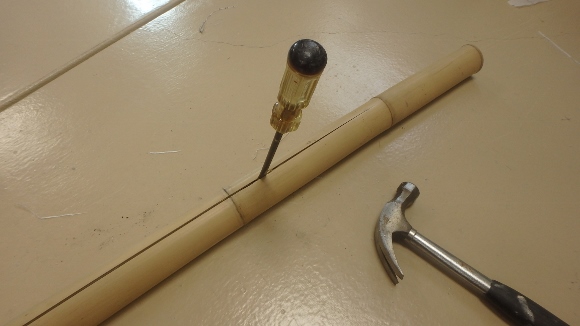
Putting a stress relief crack in a bamboo culm.
For quality bamboo, we’re looking for the following characteristics:
- The bamboo should be relatively straight.
- Fairly uniform color.
- Minimal surface discoloration/anomalies.
- Good spacing between the growth rings (nodes).
- Thick walls.
Also, one of the most important aspects in the bamboo is that each piece have a high concentration of “power fibers” at the outer surface of the bamboo. The power fibers are seen as the darker region towards the outer surface of the bamboo. It’s these power fibers that give the bamboo strength, and having a high concentration of power fibers is a good thing in bamboo fly rods. The white region visible at the inner surface of the bamboo is called the “pith”, and it has a spongy characteristic that isn’t desirable in bamboo fly rods.
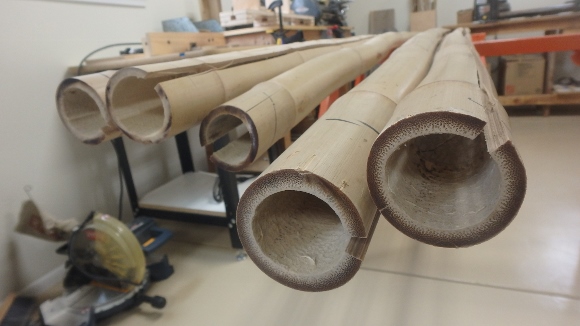
Bamboo cross section showing good wall thickness and high concentration of the dark power fibers at the outer surface of the bamboo.
In starting a bamboo fly rod, the 12 ft. long culm is first cut to the length of the individual rod sections (plus a few extra inches). Next, that culm is split into approximately 20 thin sections…but the details of that are for another post!
I now have a good supply of bamboo culms that should last me for a couple of years.
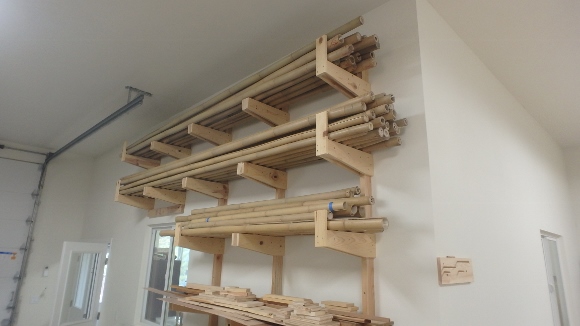
All my new bamboo stacked in my wood rack.


